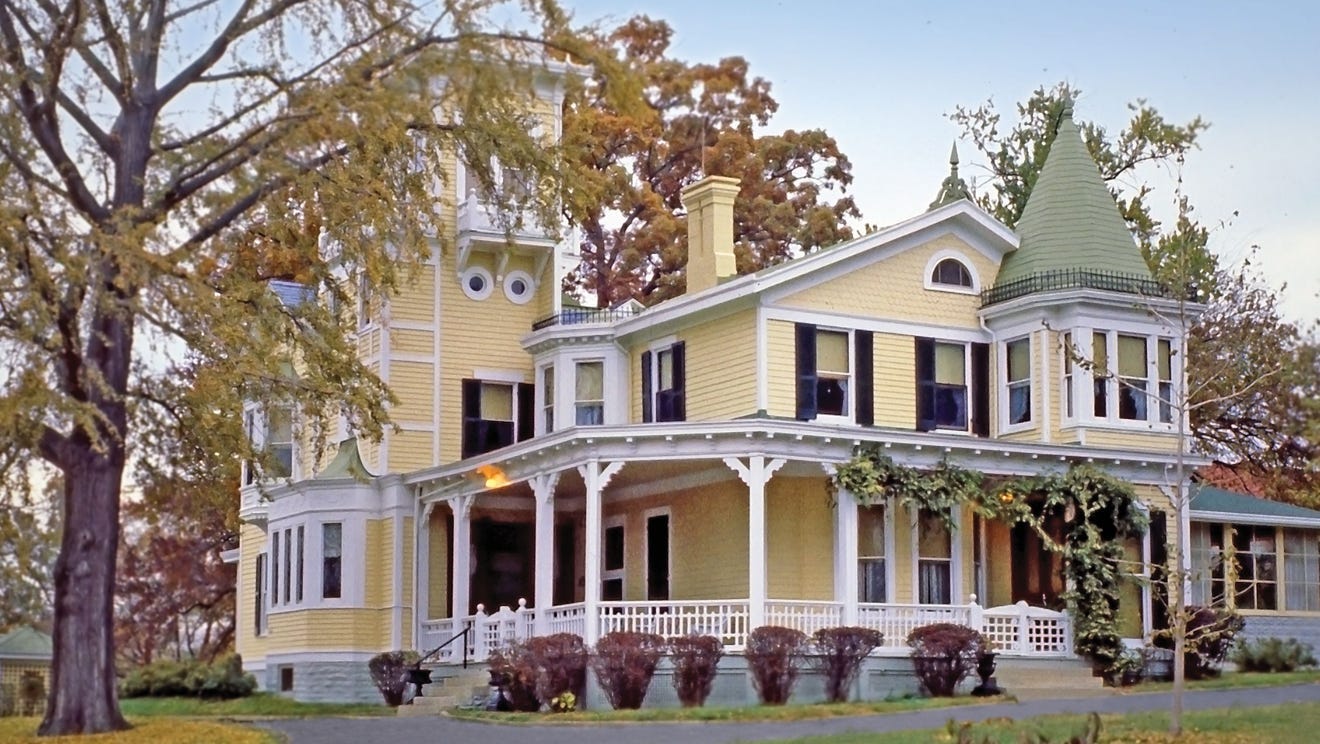Table Of Content

The Gamble House was commissioned by David and Mary Gamble to be built as their winter home in Pasadena, California. The Gamble family hired brothers Charles Greene and Henry Greene of Greene and Greene to build the home beginning in 1908. The home was finished in 10 months and represents an iconic example of the American Arts and Crafts period. Impressive interior woodworking employed by the Greenes including the usage of scarf joints highlight the natural tones of the many species of wood incorporated into the home's interior. The exterior is equally impressive, and the grounds and woodworking highlight a cross between the Arts and Crafts style and Japanese design that were commonplace in homes designed by the Greene brothers.
The Gamble House: History and Status
Three of the bedrooms have porches, which were often used as sleeping porches in the days before air conditioning. Restored stonework in the front of the house showcases different planters and new landscaping. The front porches (on the ground level) are paved with patterned bricks, and lead out to a pond and other garden areas. Yes, the Gamble House's exterior is featured in the 1985 film Back to the Future.
The Gamble House: Style
Nikki Haley's High-Stakes Gamble on Her Home State - The New York Times
Nikki Haley's High-Stakes Gamble on Her Home State.
Posted: Fri, 23 Feb 2024 08:00:00 GMT [source]
The third story of the home was originally used as a billiard room, but today it houses the Greene and Greene memorial library. The home also includes a full basement for laundry, storage, a heating plant, and a darkroom space. The Arts and Crafts Movement in American Craftsman style architecture was focused on the use of natural materials, attention to detail, aesthetics, and craftsmanship. The 1985 movie, Back to the Future, once again brought the home to the forefront in American popular society.
David B. and Mary H. Gamble Professorship
Paths made with large water-worn stones from the nearby Arroyo Seco are reminiscent of running brooks crossing the lawns. The overall landscape design and constructed garden elements are integrated with the architectural proportion and detailing. The triple front door and transom feature a Japanese black pine motif in plated (more than one layer) leaded art glass, highlighting the Asian influence that runs throughout the house.

Following the deaths of David and Mary Gamble, the home was lived in by Mary's younger sister Julia until her death in the early 1940s. Following the death of Julia, the final generation of Gambles lived in the home from 1946 until it was gifted to the City of Pasadena in 1966. The Gambles entered a deal with the University of Southern California to preserve the home, and they gifted the home to the city, which still owns the property to this day. The Gamble House floor plan incorporates inviting common areas and extensive woodworking to create the three-story wood framed structure. The first floor of the home consists of a living room, dining room, den, kitchen with pantry and cold room, a guest bedroom, four bathrooms, and an entry-way decorated by handmade red mission tilework.
Wood is incorporated as a major focal point throughout the interior of the home. Teakwood and mahogany are common species of wood incorporated throughout the interiors of Gamble House. Traditional styles of wood joinery including scarf joints were employed by the Greene brothers in the construction of many interior elements and furnishings in the home. Five varieties of wood were used throughout the home in ways that highlighted the natural colors, tones, and grains throughout the interiors of the space. The Greene brothers found nature and the natural environment to be pivotal to their personal and professional senses of style.
Additional elegant Greene and Greene creations (still privately owned) abound 2 blocks away along Arroyo Terrace, including nos. 368, 370, 400, 408, 424, and 440. For occasional opportunities to actually go inside the homes, there's the annual Craftsman Weekend in October, and Bungalow Heaven in April. The strong ties to the outdoors are brought to the interior as well, through flowers and trees which are engraved in the windows, doors and lanterns.
Home Briefs: Filoli and Gamble Garden kick off holiday festivities with garden tours, light displays - Mountain View Voice
Home Briefs: Filoli and Gamble Garden kick off holiday festivities with garden tours, light displays.
Posted: Tue, 07 Nov 2023 08:00:00 GMT [source]
Ted was looking for confirmation on period correctness on the proposed replacement stove and icebox, and on the linoleum in the old black and white images. Karla was able to send him images of period advertisements, which corroborated the period of the icebox, stove and linoleum. Karla also pointed out that the stove was not of the correct period for the house, and she could assist with sourcing that as well. At that point, Karla raised her hand and let Nancy know that she could help provide an appropriately sized, correct period icebox for their cold room.
The Gamble House has developed a special one-hour tour of the house’s grounds and exterior. Your guide will lead an exploration of the house’s context and history throughout the gardens and terraces. It was commissioned by David and Mary Gamble, of Cincinnati, Ohio, as a winter residence. Teak, maple, oak, Port Orford cedar, and mahogany surfaces are placed in sequences to bring out contrasts of color, tone, and grain. Inlay in the custom furniture designed by the architects coordinates with the inlay in the tiled fireplace surrounds, and the expressed, interlocking joinery on the main staircase was left exposed. The Greene brothers received little acclaim for their work during their active years.

Celebrating a diverse mix of art, architecture and history of the Arroyo Seco area, MOTA Day features five unique... Exterior porches are found off three of the second-floor bedrooms and were used for sleeping or entertaining. The Green brothers attend an exhibit on Japanese architecture while moving to California, and the influence is evident throughout their work. In The Gamble House, Japanese-inspired cherry blossom tree and cloud motifs can be seen on the front doors, windows, lighting, and more. In 1985, the home gained worldwide notoriety as Emmett "Doc" Brown’s house in Back to the Future. While the Greene brother’s design wasn’t initially popular, it is now cemented as a cultural icon.
Round, tapered beams extend on the exterior of the home to support the extended porches providing an artistic highlight to the home's exterior styling. Heavy layers of shingles insulate the house; even today the home does not need air conditioning to cool the interior because of the particular design of the roof. Stone and brickwork were incorporated not only as a design element, but also for practical reasons.
The home was the setting for Dr. Emmett Doc Brown's 1955 home in the film. The former carriage house on the property, which today serves as the museum's gift shop, was also included in the film as Doc's workshop and laboratory. For those who watched the film, you may remember that Doc Brown's workshop was all that remained of the iconic home in the film version, and it sat in the back of a fast food parking lot. This was a bit of Hollywood magic, and craftsmen from the film built a replica of the carriage house to create this element of movie magic. None of the real interiors of the home were used in the film due to the delicate nature of the furnishings that adorn the interior of the home. The Gamble house is significant architecturally in history and in the present day.
It was added to the National Register of Historic Places in 1971 and declared a National Historic Landmark in 1977. In 2008, a Los Angeles Times survey included the home in a list of all-time top 10 houses in Los Angeles. The rafter tails extending beyond the house’s eaves evoke Japanese sensibilities, yet they were an invention of the Greenes and are rarely found elsewhere.
This integration reflects the topography, climate, and the relaxed, outdoor orientation of the southern California lifestyle. Pasadena’s lure among culturally minded and wealthy Midwesterners, combined with a building boom in the early twentieth century, made the city a viable, if short-lived, market for the Greenes’ costly work. The oft-published houses of Greene and Greene inspired builders of more modest dwellings, and the brothers’ work would soon be conflated in the popular imagination with more modest craftsman bungalows. The Gamble House is located in the Los Angeles suburb of Pasadena, CA. The home is also known as the David B. Gamble House and epitomizes the iconic style of the American Craftsman period.
The Greene's style was influenced by the Japanese architecture they saw at the World's Columbian Exhibition, a world fair in 1893 in Chicago. They would become leaders in the Arts and Crafts architectural movement, which sought a return to more handcrafted work in response to industrialization. The Gamble House is an example of this movement, with all of its beautiful, yet functional woodwork throughout the house. When it came to designing and building the house, it was all about quality versus quantity. The Gamble House was built as a winter home, and the Gamble family lived in the house every winter until their deaths in the 1920s.

No comments:
Post a Comment